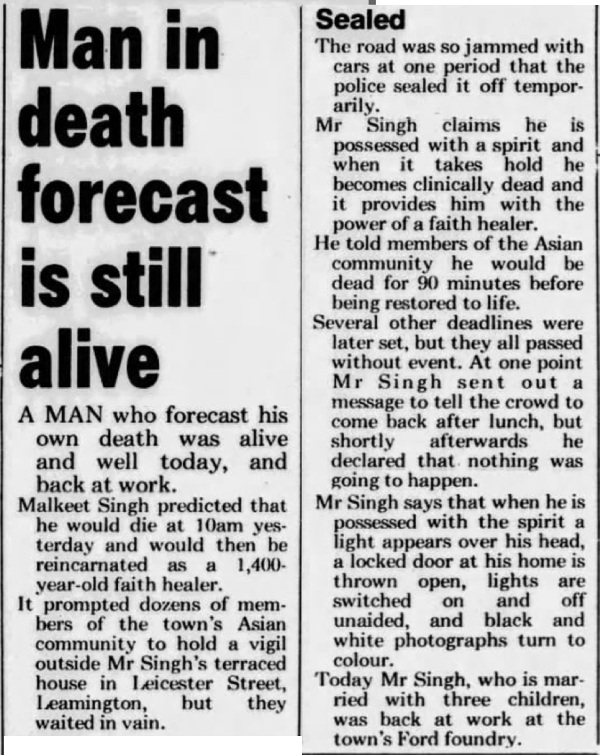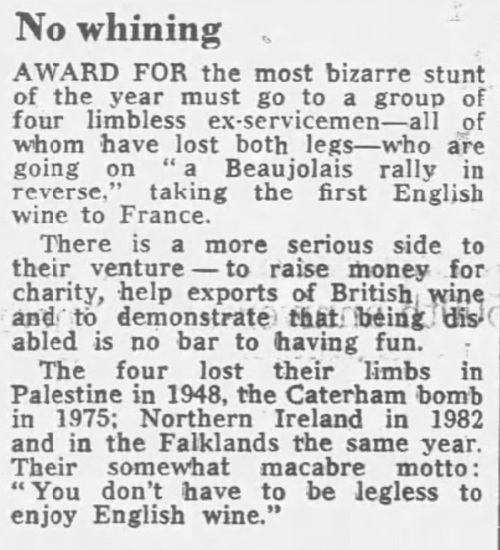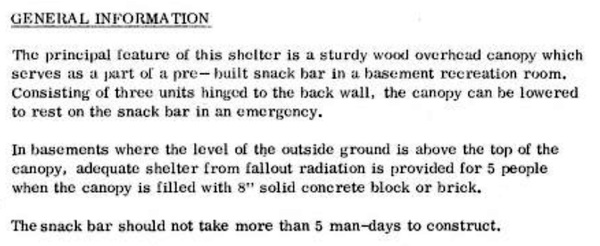1980s
Legal Daisy Spacing
I read this book nearly forty years ago, and never forgot it. It's weird and hilarious. I was so glad to see it turn up at the Internet Archive.It purports to be a manual for terraforming a planet. But it's written by madmen and nature haters. Cacti must be enclosed in steel. Mountains must be leveled. Jungles must be paved over.
Read it here.



Posted By: Paul - Fri Jul 12, 2024 -
Comments (0)
Category: Mad Scientists, Evil Geniuses, Insane Villains, Science Fiction, 1980s
Passenger safety pods
Landon Tinder had a plan to make air travel safer by putting passengers inside near-indestructible pods. The plane could crash and the pods, he claimed, would survive.Details from the Chicago Tribune (Aug 27, 1989):
Each of Tinder's "passenger pods" would be equipped with its own airtight door, crash bag, cooling system, shock-absorbent shell and oxygen supply.
In the event of a crash or terrorist threat, the pod would seal itself off and the air bag would engage—all in two to three seconds. The 5-inch-thick honeycomb shell of aluminum, fiberglass and titanium could withstand temperatures up to 1,500 degrees Fahrenheit for more than 20 minutes. If the plane crashes in water, the pod would float.
"The aircraft around it can perish; this will stand strong," Tinder said.

Why the airlines didn't like his idea:
At $40,000 a seat, airlines would have to pay about $2 million to fit each plane with ALPS containers. More importantly, the system would reduce each plane's seating capacity by 19 to 28 percent—a proposition that makes industry analysts profoundly skeptical.
"It would ruin the operating economics of every known airline," said Paul Turk of AV-MARK, a consulting firm specializing in airline economics.

Santa Cruz Sentinel - Aug 7, 1989
Posted By: Alex - Tue Jun 11, 2024 -
Comments (2)
Category: Air Travel and Airlines, 1980s
Life Is Flashing Before Your Eyes
Posted By: Paul - Sun May 19, 2024 -
Comments (0)
Category: Music, Philosophy, Surrealism, Cartoons, Psychedelic, 1980s
The Not-So-Distant Past Sins of Amtrak



Posted By: Paul - Tue May 14, 2024 -
Comments (3)
Category: Excrement, 1980s, Trains
Baseball blown foul
May 1981: an infamous moment in baseball history — when Lenny Randle made a ball foul by blowing on it.Randle later swore he simply yelled at the ball, but in the video it sure looks like he's blowing on it. However, I have a hard time believing he was able to blow on it hard enough to alter its course. I suspect it would have ended up foul without his assistance.

Spokesman Review - May 29, 1981
Posted By: Alex - Tue Apr 30, 2024 -
Comments (0)
Category: Sports, 1980s
Follies of the Madmen #590
Posted By: Paul - Mon Mar 18, 2024 -
Comments (1)
Category: Crime, Hygiene, Advertising, 1980s, Europe
A Death Foretold
Malkeet Singh predicted that he would die on Sunday, April 8, 1984 at exactly 10am. Then he would be reincarnated as a 1400-year-old faith healer. Dozens of people turned up to witness the event, but nothing happened. So Singh told the crowd to come back after lunch. Still, nothing happened. The next day Singh returned to work at the local Ford factory.
Coventry Evening Telegraph - Apr 9, 1984
Posted By: Alex - Mon Feb 26, 2024 -
Comments (1)
Category: Death, Predictions, 1980s
Spelling-Challenged Bank Robber
As far as I can tell, this guy was never caught. On the other hand, it doesn't sound like his efforts got him much money.

Miami Herald - Oct 11, 1980
Posted By: Alex - Thu Feb 08, 2024 -
Comments (3)
Category: Stupid Criminals, 1980s
Promoting English Wine
Aug 1985: Four British ex-servicemen, all missing both their legs, embarked on a tour of France to promote English wines. Their motto: "You don't have to be legless to enjoy English wine."Some explanation may be needed for Americans. 'Legless' is British slang for 'very drunk.'

London Daily Telegraph - Aug 10, 1985
Posted By: Alex - Mon Feb 05, 2024 -
Comments (3)
Category: Inebriation and Intoxicants, 1980s, United Kingdom, Legs
Home Fallout Shelter Snack Bar
In 1980, FEMA published plans that allowed anyone to build their own Home Fallout Shelter Snack Bar. The plans are available at archive.org.

In 1983, artist Michael Smith followed FEMA's plans and built a Fallout Shelter Snack Bar, which he then displayed as an art installation. To accompany the snack bar, he also created a video game housed in a custom, upright arcade cabinet:
More info: rhizome.org

source: Video Installation 1983

Posted By: Alex - Sat Nov 11, 2023 -
Comments (0)
Category: Art, Atomic Power and Other Nuclear Matters, 1980s

| Who We Are |
|---|
| Alex Boese Alex is the creator and curator of the Museum of Hoaxes. He's also the author of various weird, non-fiction, science-themed books such as Elephants on Acid and Psychedelic Apes. Paul Di Filippo Paul has been paid to put weird ideas into fictional form for over thirty years, in his career as a noted science fiction writer. He has recently begun blogging on many curious topics with three fellow writers at The Inferior 4+1. Contact Us |




